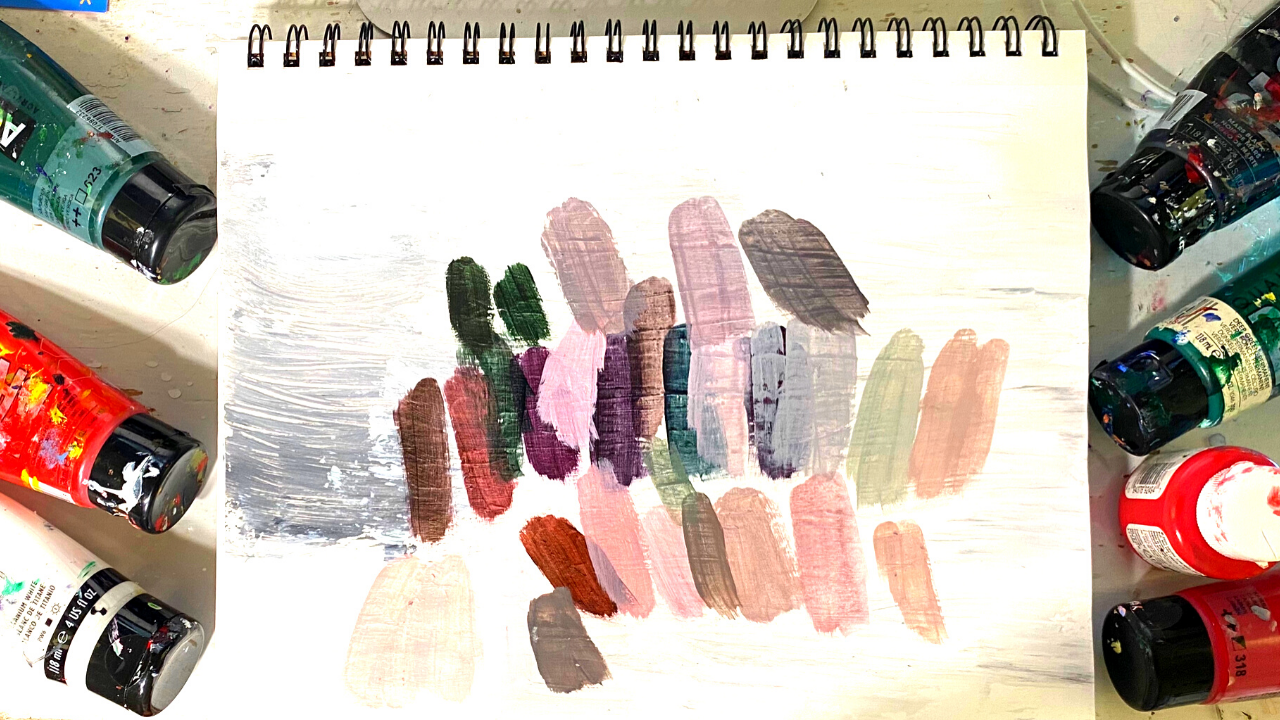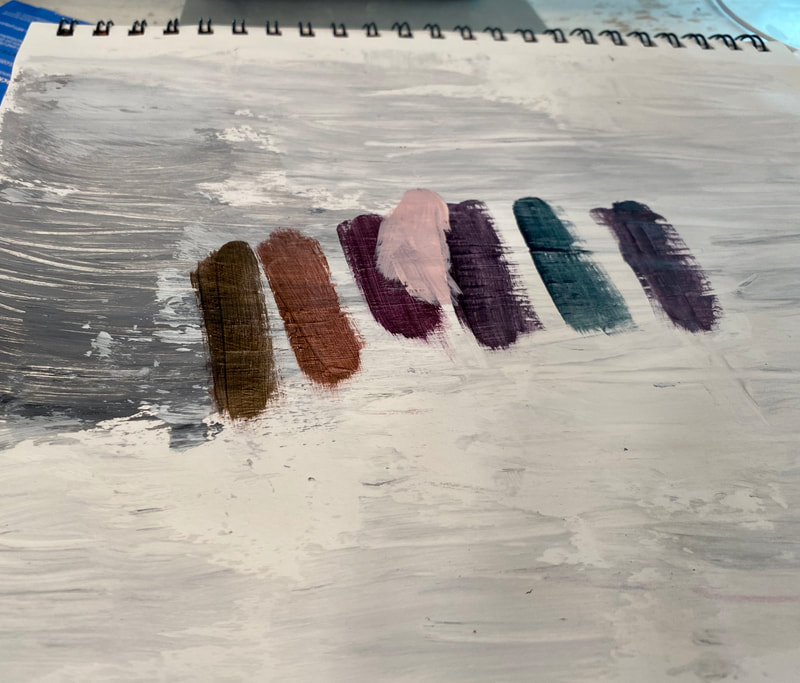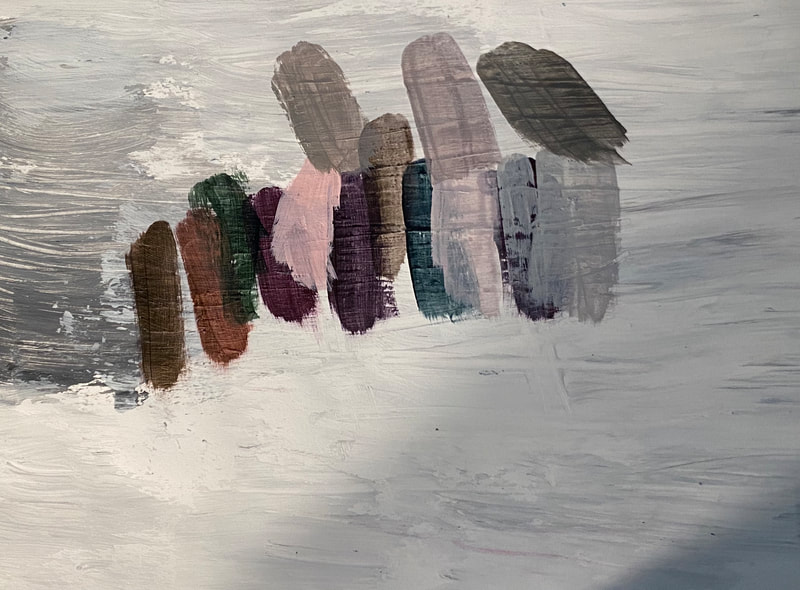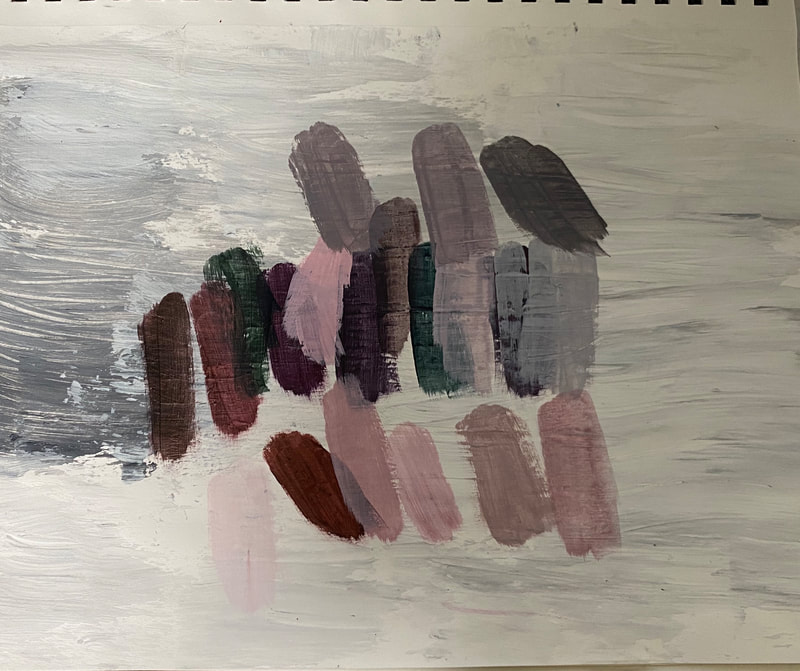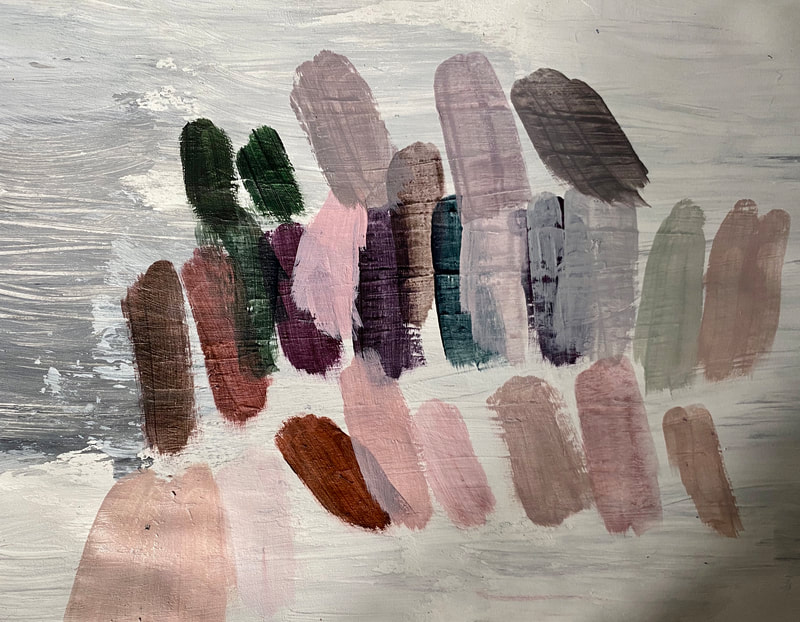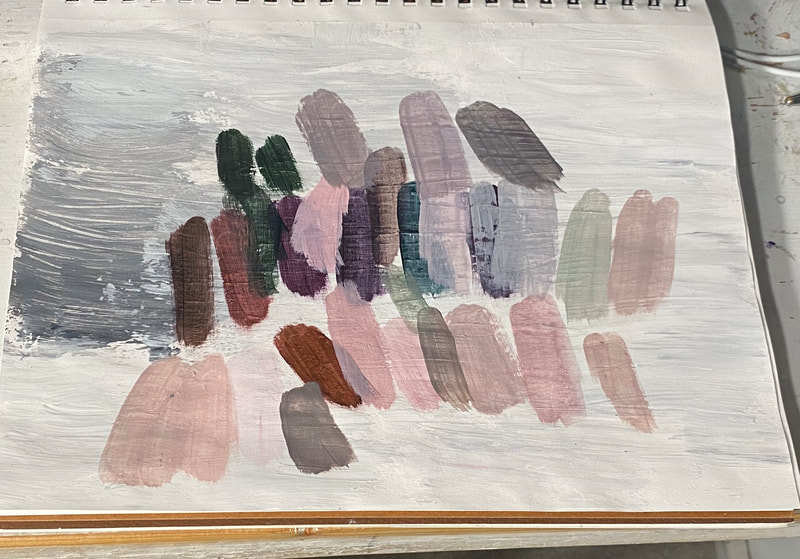|
Day One: I gessoed a piece of sketching paper because I want to do some experimenting with acrylics. I don’t have boards I feel comfortable experimenting on and guessing sketching paper makes it suitable for acrylic and even oil paint, if you use the right gesso. Little tip there. What I want to experiment with is mixing flesh tone from red and green, plus black and white. I’m going to be using one shade of red and one shade of green and trying to mix as many flesh tones as I can just by varying the ratio of red to green and how much black and white I add. I’ve been inspired by this video from HappydArtist. Day Two I ended up using carmine from Amsterdam Standard Series as my red and Permanent Green Deep from Liquitex Basics as my green. It soon became clear to me though, that mixing skin those shades was not going to work. I remembered hearing that quinacridone was a more neutral red and I knew I had some in my paint box, so I decided to try it. Carmine leans very much toward the blue side, which probably accounted for the purple tone I kept getting. I did like my initial results with the quinacridone much better. I felt I was getting an actual neutral brown instead the obvious purple I’d gotten before. But I still wasn’t happy with my results. It seems no matter how I mix these colors, they’re either too rosy or too gray. By the time I got up from trying this experiment for the first time, I spent almost thirty minutes just mixing colors. I’m not willing to spend that much time coming up with a flesh color when I know I have faster methods. I have mixed red and green in the past, but I usually mix a green from yellow and blue instead of using a green from a tube. It’s more time consuming, but I think I actually get better results this way because of how I can control the outcome of the color and make it more neutral. I think, like the carmine, the deep green permanent just leans a bit too much to the blue side. Day Three Coming back to this experiment, having taken another look at Happyd’s video, I decided to try using sap green instead while still using the quinacridone. After some further fiddling, I came up with a color that I think I would be happy to use on someone’s face. My next challenge is to take skin photos I’ve cropped and come up with a colors that match, as closely as I can, each of the people’s skin tones in these photos, using only the two colors of sap green and quinacridone red, plus black and white. Day Four Now I’ve switched from using quinacridone now to using cadmium red medium. Now I’m using both colors that Happyd was using in her video, the cadmium red medium and the sap green. I think these colors work very well for mixing a fair or Caucasian skin tone. I’m not sure about other colors, though. I’m debating with myself whether or not to even try. Day Five I decided not to try to mix the specific shades of skin that were in my downloaded reference phots, but to instead try mixing darker values. I did this by just mixing more of the red and the green into my mixture and then some mars black when I wanted it to be really dark. Conclusion I will likely not be adopting mixing red and green as my go to method for mixing skin tone. I enjoy using a range of colors. I don't feel that just two colors give me the range I want. For my most recent portrait, I mixed the skin from cadmium red medium and deep green permanent, but I added some yellow to neutralize it because my original mixture was too purple. Then, there’s my trusty raw Sienna. Even so, it was nice to do this experiment and I plan on testing out other mixes of complementary colors for skin. I might find these different combinations work better for different ethnicities of people, for instance. Here's a gallery of the pictures I took during the course of this experiment.
0 Comments
Your comment will be posted after it is approved.
Leave a Reply. |
Sara MillettPainter of portraits and wildlife Archives
November 2023
Categories
All
|
